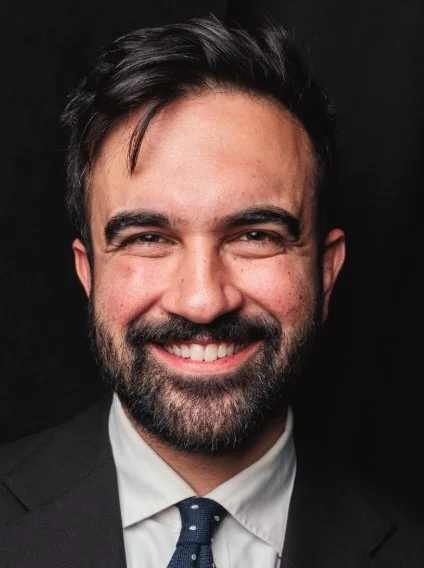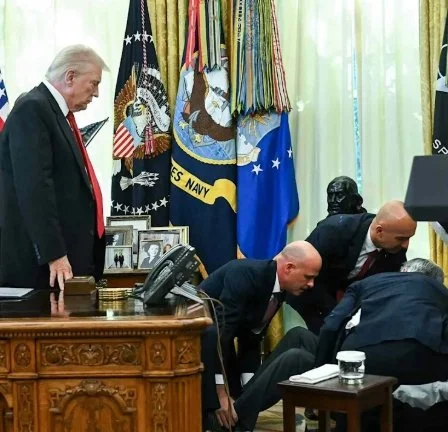The Peacemaker Illusion: How Donald Trump’s “Eight Wars” Narrative Reveals a Psychology of Shallow Leadership
In 2025, Donald Trump began repeating a remarkable line on the campaign trail and in his speeches at the United Nations: “I have ended seven unendable wars.” By autumn, that number had grown to eight. The statement was sweeping and self-congratulatory, the kind of grand historical boast that evokes Truman’s “V-J Day” or Reagan’s “tear down this wall.” But the claim fell apart under scrutiny. Fact-checkers at AP News, CBS, FactCheck.org, and PolitiFact found that most of these “wars” were at best limited skirmishes or ongoing disputes that saw temporary pauses, not permanent peace.
Yet the factual weakness of Trump’s assertion is less revealing than the psychology behind it. Across each case, from Armenia and Azerbaijan to Israel and Hamas, his rhetoric exposes a shallow but consistent leadership psychology. It is a psychology that values performance over process, scorekeeping over substance, and narrative control over shared governance. This exposé traces how Trump’s language, behavior, and self-framing during these eight supposed peacemaking moments reveal a leader for whom diplomacy is not a process of empathy or negotiation, but a stage for self-advertisement.
The Scorekeeper’s Mindset
Trump’s statement that he ended “eight wars in eight months” tells us more about his cognitive framing than about geopolitics. In that formulation, peace is reduced to a measurable output, an integer on a scoreboard. He even boasted, “We are averaging one a month.” The phrasing is competitive, almost athletic. It turns foreign policy into a quarterly earnings report and assigns the president the role of star player rather than steward of institutions.
Psychologists who study leadership narcissism note this pattern: leaders high in narcissistic traits often seek quantifiable proof of dominance rather than relational or systemic success. Counting “wars ended” supplies a visible metric that can be broadcast on television and repeated at rallies. It replaces the messy ambiguity of peacebuilding with a clean, self-flattering statistic.
This scorekeeping mentality also explains why Trump often reclassifies small diplomatic incidents as “wars.” To maintain his monthly average, he must inflate the scale of the conflicts he claims to have ended. The Egypt–Ethiopia dispute over the Nile, for example, was never an active war in 2025; it was an ongoing water-rights negotiation. Labeling it a war allowed Trump to add one more point to his scoreboard.
Case 1: Armenia and Azerbaijan — The Transactional Peacemaker
In August 2025, Trump hosted Armenian and Azerbaijani leaders at the White House and announced what he called a “historic peace deal.” The real outcome was a framework agreement committing both sides to reopen transport corridors and resume talks. Analysts from CBS and FactCheck.org praised the step but warned that it was far from a final treaty.
Trump’s quote after the meeting captures his entire diplomatic psychology: “I said, ‘I’m not gonna do a trade deal if you guys are gonna fight. It’s crazy.’” Peace, in Trump’s logic, is not about reconciliation or mutual security guarantees; it is about the leverage of commerce.
This is the mindset of a negotiator, not a statesman. It frames international conflict in transactional terms, treating each side as a business partner that can be bullied or rewarded into compliance. The approach can occasionally yield short-term breakthroughs, but it rarely produces enduring peace because it ignores deeper emotional, historical, and identity-based grievances.
Trump’s insistence that he “ended the war” reflects what psychologists call closure bias, a cognitive need to perceive an outcome as final even when it is unresolved. By declaring the Armenia–Azerbaijan conflict finished, he could move it off his mental balance sheet and present himself as a finisher rather than a maintainer.
Case 3: Israel and Iran — The Illusion of Command
In June 2025, a short but tense escalation between Israel and Iran raised fears of regional war. After Israeli strikes on Iranian nuclear and military sites and limited Iranian missile retaliation, both sides accepted a ceasefire announced in Washington.
Donald Trump quickly took full credit, declaring on television that he had ordered “strategic actions” that forced “both sides to stand down,” and proclaiming, “We’ve achieved a complete and total ceasefire — another peace the world owes America.”
Independent reporting from CBS News and FactCheck.org found no evidence that the United States directly compelled either side to halt fighting. Mediation occurred mainly through European and Gulf intermediaries, and analysts noted that both Israel and Iran were already seeking an off-ramp for domestic and economic reasons.
The episode fit Trump’s recurring pattern: treating complex diplomacy as a test of personal dominance. His rhetoric of command — “We told them to stop, and they stopped” — reduces multilateral crisis management to the fiction of unilateral control. Psychologists call this control narcissism, the belief that willpower alone can override political reality.
In truth, the ceasefire reflected converging interests, not an American ultimatum. But Trump’s narrative turned coincidence into obedience, reaffirming the self-image of a leader whose voice alone moves the world.
Case 3: Thailand and Cambodia — Speed as Virtue
The Thailand–Cambodia border skirmish of July 2025 lasted five days before a Malaysia-brokered ceasefire. Trump attended a later signing ceremony in Kuala Lumpur and declared, “We just did the deal and reported the deal.” He boasted that his administration had ended “eight wars in eight months.”
The statement reveals a fixation on tempo. Fast equals effective. In business culture, speed signals competence. In peacebuilding, it signals fragility. True conflict resolution requires monitoring, demobilization, and trust-building, processes that unfold slowly and often invisibly.
Trump’s psychological orientation toward speed reflects what social psychologists call performance bias, the tendency to value visible, immediate action over sustained, structural work. It is leadership for television rather than for history. The irony is that in several cases, including Thailand–Cambodia, his haste undermined the very durability he claimed to achieve.
Experts note that violence and displacement continued in border areas months after the “deal.” But for Trump, the signature ceremony itself constituted completion. The peace process became a photo op, not a policy.
Case 4: India and Pakistan — The Tariff Threat
Following a terror attack that triggered cross-border strikes between India and Pakistan, Trump claimed to have prevented nuclear war through a phone call and a threat. “I was going to put 250 percent on each country,” he said, “which means you’ll never do business.”
This is the purest expression of Trump’s coercive worldview: the belief that economic intimidation can replace diplomacy. It also reflects what political psychologists term dominance orientation, a conviction that all relationships are hierarchical, with oneself at the top.
The problem is that such a mindset cannot accommodate equality or collaboration. In Trump’s telling, India and Pakistan are unruly clients rather than sovereign actors. Their agency disappears while his dominance fills the narrative space.
India’s government publicly denied any U.S. role in the ceasefire, and Pakistan’s praise appeared designed for domestic consumption. Still, the story persisted because it fit Trump’s archetype: the lone strongman who imposes order through threat.
Case 5: Rwanda and the Democratic Republic of Congo — Triumph Without Truth
The White House hosted Rwandan and Congolese leaders for a signing ceremony in June 2025. Trump hailed it as a “glorious triumph for the cause of peace.” Within weeks, the M23 militia resumed attacks in eastern Congo, killing hundreds.
The cognitive dissonance between declaration and reality is stark. In Trump’s psychology, however, the ceremony itself constitutes success. Once the cameras click, the mission is accomplished. This pattern aligns with what leadership psychologists describe as event narcissism, the transformation of every action into a personal milestone. The focus is on the leader’s emotional gratification rather than on objective outcomes.
FactCheck.org and Vox both note that the deal lacked enforcement mechanisms and excluded key armed groups. Calling it a “triumph” was not merely spin; it was denial. The language of triumph turns an unfinished process into a closed story, shielding the speaker from accountability when the story reopens in blood.
Case 6: Serbia and Kosovo — Inventing the Crisis
Trump’s weakest claim may be his boast that he “stopped a big war” between Serbia and Kosovo “because of trade.” No credible evidence suggests a war was imminent, and Serbia denied the story outright. Yet the episode fits a psychological pattern: invent a crisis to stage a rescue.
This is the hero narrative in miniature. By conjuring a near-disaster and claiming to avert it, Trump can occupy the role of protector without the inconvenience of genuine risk. It is the same dramaturgy used in his self-portrayal of the 2017 North Korea summit, where global catastrophe was supposedly seconds away until he intervened.
In clinical terms, this is a form of narcissistic fantasy. The individual inflates both the threat and their capacity to resolve it, sustaining the self-image of indispensability. When the crisis is imaginary, success is guaranteed.
Case 7: Egypt and Ethiopia — Padding the Scoreboard
The dispute over Ethiopia’s Grand Renaissance Dam had been simmering for years, involving questions of water allocation and national sovereignty. No war had broken out. Yet Trump included this “conflict” in his tally.
FactCheck.org called the claim “a stretch bordering on fabrication.” But from a psychological standpoint, it is consistent. The narrative must contain eight wars because “seven” sounds incomplete. Rounding up maintains momentum in the storyline of perpetual achievement.
This is quantitative narcissism, the use of numerical claims to construct an aura of greatness. The content of the number is irrelevant; the act of counting confers legitimacy. By padding the scoreboard, Trump transforms routine diplomacy into evidence of historic genius.
Case 8: Israel and Hamas — The Sunrise Delusion
The 2025 truce between Israel and Hamas, involving hostage exchanges and limited withdrawals, was the product of complex multilateral diplomacy. The United States did play a supporting role, but the idea that Trump “ended the war” is inaccurate.
Still, his rhetoric was lyrical: “The sun rises on a holy land that is finally at peace.” This is not policy language; it is biblical theater. Psychologically, it expresses what scholars call messianic self-perception, a belief in one’s own redemptive mission.
By invoking cosmic imagery, Trump situates himself not just in politics but in prophecy. The problem is that prophecy leaves no room for contingency. When violence inevitably resumes, the prophet is either betrayed or ignored; he cannot be wrong.
The Anatomy of Shallow Leadership
Taken together, these eight stories reveal a coherent psychological portrait of Trump’s leadership style. It is not simply narcissism in the sense of vanity. It is a structured cognitive and emotional orientation toward the world.
Performance over Process. For Trump, the performance of negotiation—the handshake, the press release, the boast—is the end in itself. Process, with its slow compromises and bureaucratic detail, is experienced as an affront to his self-image as a man of action.
Scorekeeping over Substance. Quantitative bragging, such as “eight wars” or “one a month,” replaces qualitative achievement. This reduces foreign policy to a self-referential competition.
Dominance over Collaboration. His repeated emphasis on tariffs, threats, and unilateral action shows an inability to imagine cooperative power. Peace is not something built with others but something done to them.
Finality over Fidelity. Once an agreement is announced, attention shifts instantly to the next boast. Fidelity to implementation, what political scientists call “the long peace,” requires patience, humility, and follow-through, traits incompatible with Trump’s need for spectacle.
Narrative Control over Reality. When the facts resist the story, the story wins. Calling skirmishes “wars” or truces “historic dawns” is not sloppy language; it is identity maintenance. To question the story is to threaten the self that the story sustains.
Why It Matters
Shallow leadership in international politics carries real human costs. Premature declarations of victory can sap momentum from fragile peace processes and leave civilians exposed when fighting resumes. When a leader treats diplomacy as branding, the incentives for long-term engagement vanish.
The Cambodia–Thailand ceasefire illustrates this danger. Trump’s triumphal rhetoric generated headlines, but months later observers reported renewed tensions and stalled demining. Without sustained pressure or monitoring, ceasefires decay. Similarly, the Armenia–Azerbaijan framework requires years of verification and mutual confidence building, not a single “deal” moment.
The deeper risk is epistemic. When leaders conflate announcement with achievement, citizens lose the ability to distinguish symbolic politics from substantive outcomes. The world becomes a theater of constant closure without resolution, a cycle of “ended” wars that never actually end.
Simply Put: The Peacemaker Who Needs Wars
Donald Trump’s self-portrait as global peacemaker is paradoxical. To sustain his image as the man who ends wars, he needs wars, or at least the appearance of them. Every flare-up becomes an opportunity for salvation; every handshake becomes an ending.
This is the psychology of a performer trapped in the role of a redeemer. It is why he counts his peaces by the month, why he calls ceasefires “complete and total,” and why he cannot tolerate the slow, cooperative labor that real peace requires.
The tragedy is that some of these interventions, particularly the Armenia–Azerbaijan and Israel–Hamas efforts, did contain potential for meaningful progress. But their promise is overshadowed by the relentless need for self-credit and dramatic closure.
In the end, Trump’s “eight wars” are not evidence of global pacification but of psychological projection. They are the wars within his own narrative, battles for dominance and validation fought through the language of diplomacy. The world he describes—simple, binary, decisively tamed by his will—exists only in the mirror of his rhetoric.
The real world remains as it always has: complex, unfinished, and resistant to the tidy finalities that shallow leaders crave.
Sources
Netanyahu Fears Peace More Than He Fears War. Trump Must Keep Up the Pressure - Haaretz Editorial
Trump claims he's ended eight wars, including Gaza. His numbers are off | AP News
PolitiFact | At UN, Donald Trump repeats that he ended 7 wars. That’s still misleading.
Cambodia and Thailand sign expanded ceasefire alongside truce-broker Trump | Reuters
Trump announces Israel-Iran ceasefire - CBS News
President Trump Brokers Another Historic Peace Deal – The White House
Azerbaijan, Armenia publish text of US-brokered peace deal | Reuters
Trump says he averted India-Pakistan clash with 250% tariff warning | Reuters











